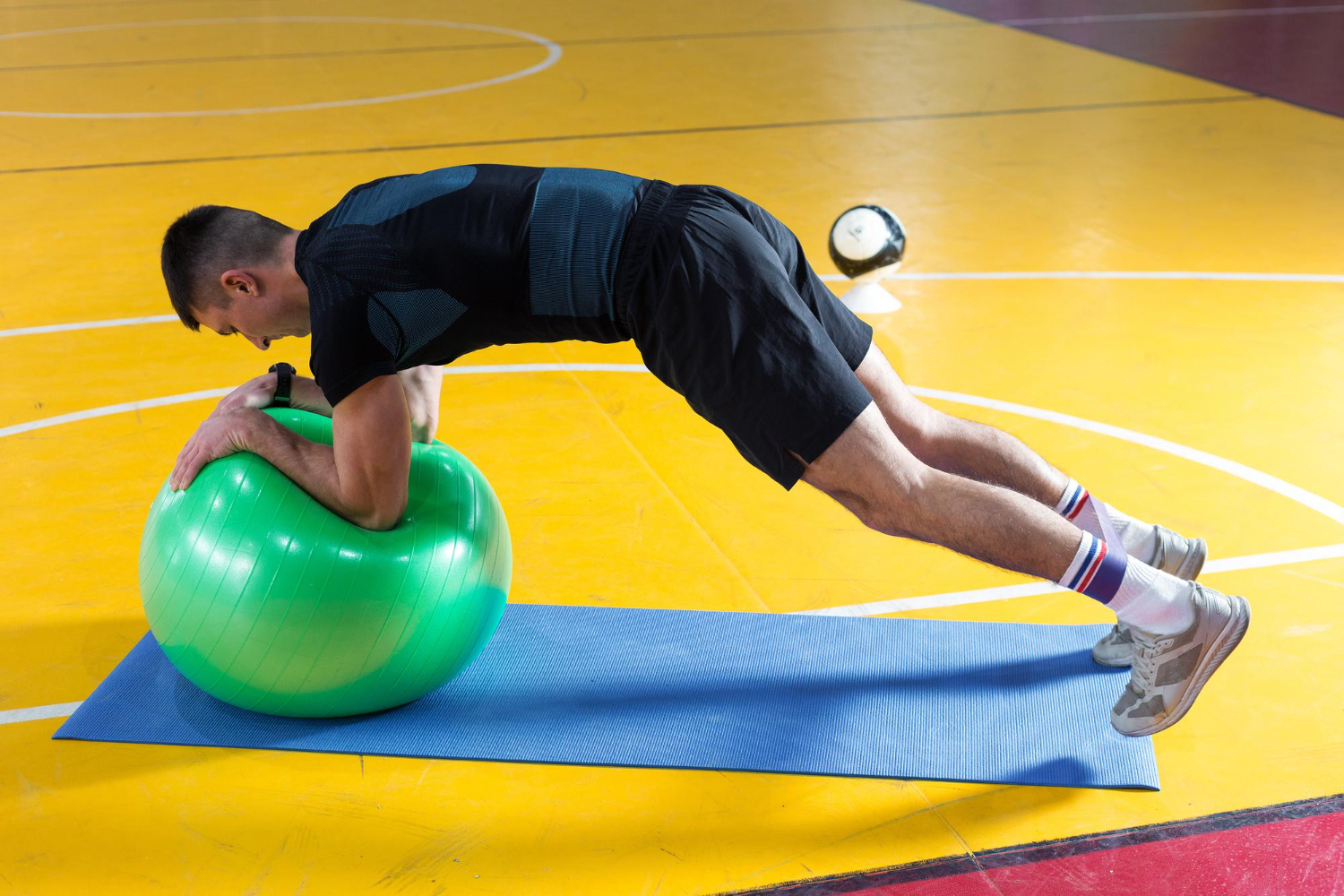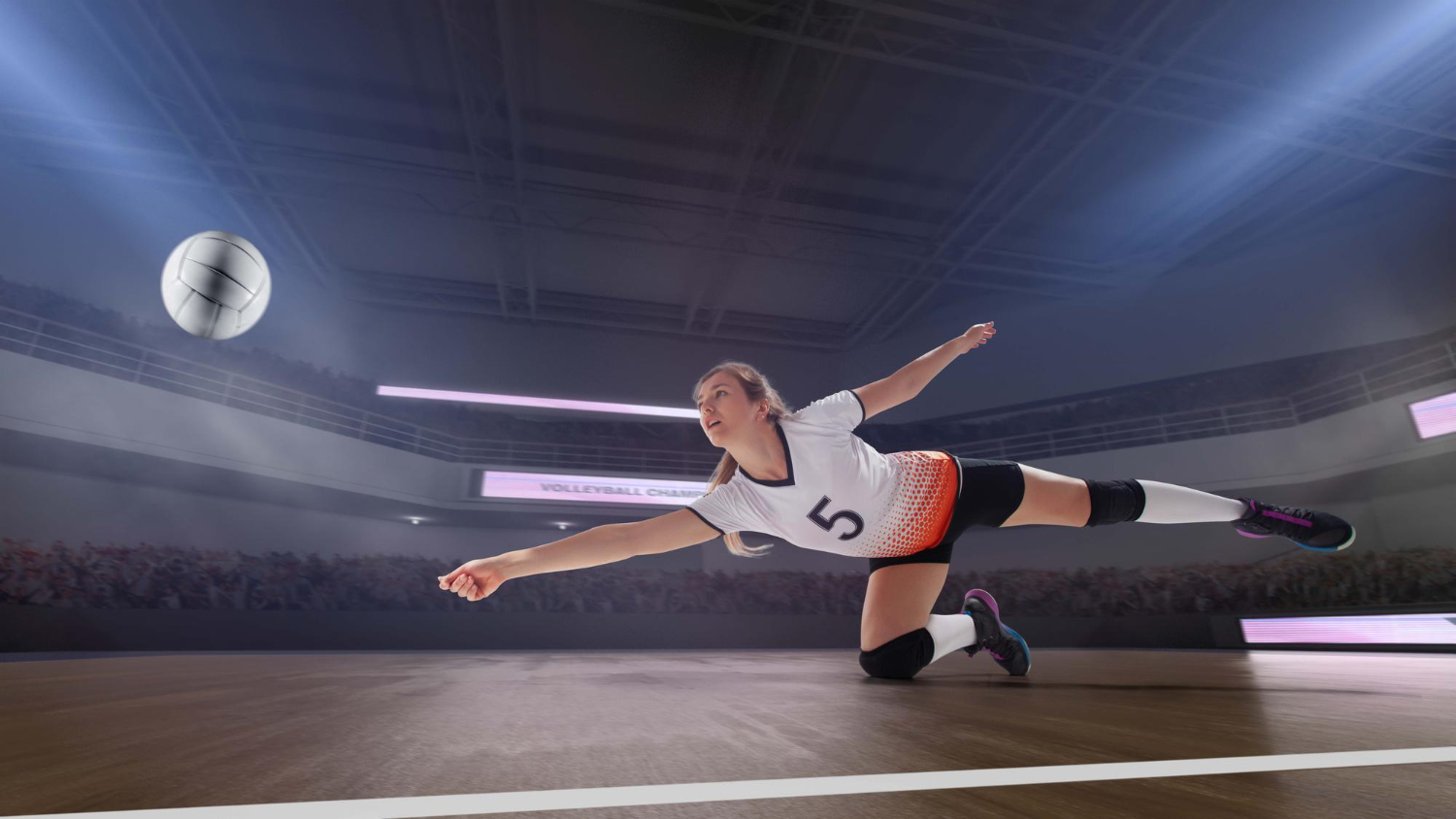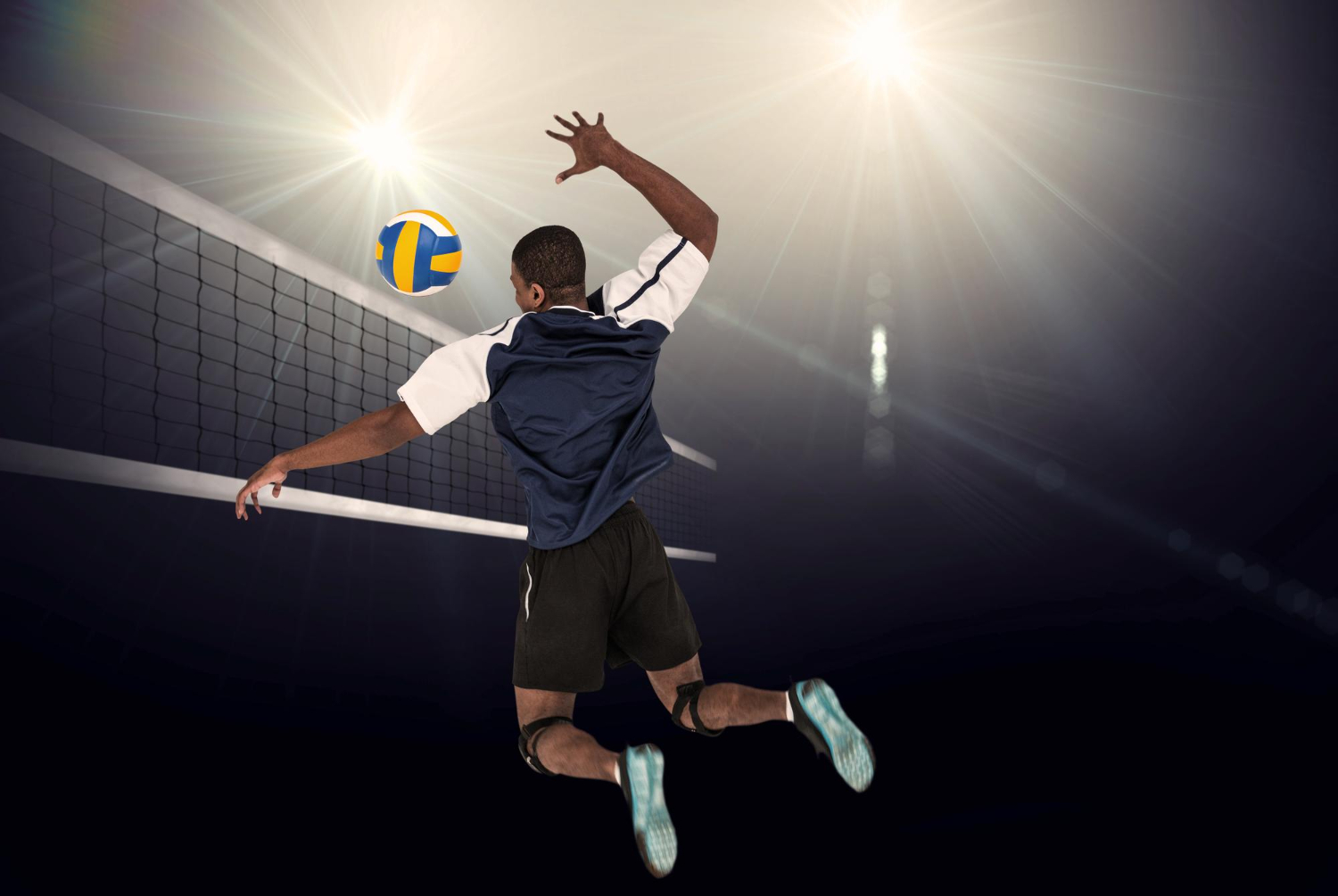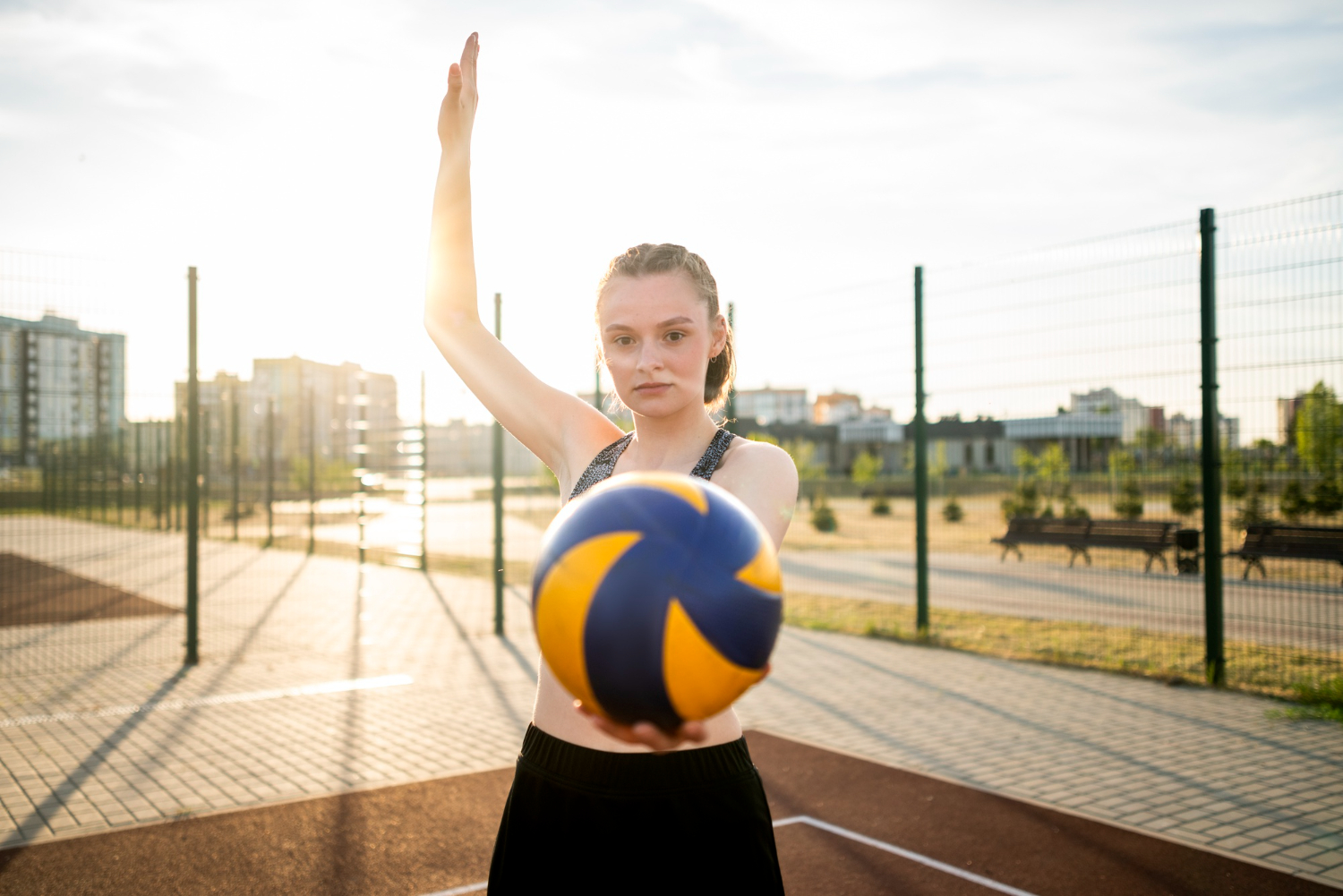Table of Contents
ToggleVolleyball is more than just jumping and hitting; it’s a fast-paced sport that demands strength, speed, and endurance. To perform your best on the court, you need conditioning drills that improve your agility, build explosive power, and keep your energy levels high throughout every rally. The right training not only helps you move quicker and jump higher but also prevents fatigue and reduces the risk of injury. In this blog, we’ll cover simple yet effective volleyball conditioning drills that will prepare your body to play harder, last longer, and dominate the game.
What is Conditioning in Volleyball?
Conditioning volleyball drills are all about preparing your body to handle the speed and intensity of the game. It combines strength training, cardio, agility work, and endurance exercises to help players jump higher, move faster, and stay sharp through long rallies. Unlike general fitness, volleyball conditioning focuses on movements you’ll actually use on the court, quick sprints, explosive jumps, and rapid changes in direction, so you can perform at your best from the first serve to the final point.
Improve your game with more than just conditioning. Check out our comprehensive list of Volleyball Drills.
Why is Conditioning Important in Volleyball?
Volleyball is fast, intense, and physically demanding. Players need more than just technical skill; they need the fitness to move quickly, jump explosively, and stay strong through every rally. Conditioning drills for volleyball players ensure that the body can handle these challenges and perform at its best. Here’s why it matters:
- Boosts Endurance: Conditioning helps you stay energetic and focused throughout long rallies and multi-set matches.
- Improves Speed and Agility: Quick movements let you chase down tough balls and cover the court more effectively.
- Builds Explosive Power: Stronger legs and core muscles translate into higher jumps and harder spikes.
- Prevents Injuries: A conditioned body is more balanced and resilient, lowering the risk of sprains and strains.
- Supports Consistency: Good fitness means you can maintain your performance from start to finish without slowing down.
Core Principles of Effective Volleyball Conditioning Drills
Effective conditioning is not just about working hard; it’s about training smart. Following the right principles helps players see steady improvement while staying safe and injury-free. Here are the key foundations of a strong volleyball conditioning program:
- Specificity: Training should match the demands of volleyball, short sprints, explosive jumps, and quick directional changes.
- Progressive Overload: Gradually increase intensity, weight, or duration so your body continues to adapt and grow stronger.
- Consistency: Regular practice is essential. Conditioning only works if you train often enough to build and maintain results.
- Individualization: Every player is different, and conditioning should consider age, position, skill level, and physical needs.
- Proper Technique: Doing drills correctly is more important than pushing harder; good form ensures safety and effectiveness.
- Rest and Recovery: Muscles need time to repair and grow stronger. Rest days and proper sleep are just as important as training.
Volleyball Conditioning Drills
Volleyball conditioning drills for high school are designed to build the strength, speed, and endurance you need to perform at your best on the court. These exercises mimic the quick, explosive movements in volleyball, helping you jump higher, move faster, and stay fresh through long matches. Here are some of the most effective drills to add to your training:
Volleyball Conditioning Drills for Beginners
If you’re just starting with conditioning, volleyball conditioning drills for middle school and high school students are a great way to build the basic strength, agility, and stamina you need for volleyball. They’re simple, require little equipment, and prepare your body for the faster, more explosive movements in the game.
-
Jump Rope Series
- Purpose: Improves foot speed, ankle strength, and coordination—all essential for quick reactions on the court.
- How it works: Use a jump rope to practice single jumps, one-leg jumps, and double unders. Start slow, then increase speed as you get more comfortable.
-
Alternating Box Blasts
- Purpose: Builds leg power and teaches you how to absorb impact safely, which translates into higher jumps for spiking and blocking.
- How it works: Stand in front of a low box or step. Step onto the box and immediately jump straight up, landing in a squat. Repeat using the other leg.
-
Lateral Hurdle Hops
- Purpose: Sharpens agility and balance, helping you move quickly side-to-side for digs and defensive plays.
- How it works: Set up low hurdles or cones in a line. Hop sideways over each hurdle quickly, staying light on your feet.
-
T-Cone Drill
- Purpose: Improves change-of-direction speed and reaction time, just like moving to cover passes or blocks.
- How it works: Place cones in the shape of a “T.” Sprint to the center cone, shuffle to the right, back to the middle, then to the left. Finish by backpedaling to the starting point.
-
Lateral Scissor Steps
- Purpose: Boosts agility and footwork, making your movements sharper and faster in real rallies.
- How it works: Lay out an agility ladder. Move sideways through it, crossing your feet in a scissor motion. Keep the rhythm quick and controlled.
-
Volleyball Suicides
- Purpose: Builds endurance and simulates the short bursts of speed used during intense rallies.
- How it works: Start at the baseline. Sprint to the 10-foot line and back, then to the net and back, and so on until the far baseline. Rest and repeat.
-
Plank
- Purpose: Strengthens the core, which is key for stability, balance, and transferring power into jumps and hits.
- How it works: Get into a push-up position but rest on your forearms. Keep your body straight from head to heels. Hold for 20–60 seconds.
-
Lunge with a Twist
- Purpose: Builds lower-body strength and adds core rotation, which improves hitting and serving power.
- How it works: Step forward into a lunge. As you rise back up, twist your torso over your front leg. Repeat on both sides.
-
Plank Airplanes
- Purpose: Challenges stability, coordination, and full-body control, making you stronger and steadier during quick movements on court.
- How it works: Start in a plank position. Extend one arm straight ahead while lifting the opposite leg out to the side. Hold briefly, then switch sides.
Advanced Volleyball Conditioning Drills
Once you’ve built a strong foundation with beginner drills, these advanced conditioning drills for Volleyball will push your speed, power, and stability to the next level. They’re designed to mimic the explosive movements of volleyball, helping you jump higher, move faster, and stay balanced in high-pressure rallies.
-
Box Jumps
- Purpose: Builds explosive jumping power, which directly improves your ability to spike and block.
- How it works: Stand in front of a sturdy box or platform. Jump onto it with both feet, land softly, then step down and repeat. Once comfortable, try rebounding into another jump quickly.
-
Hurdle Hops
- Purpose: Improves agility, quick footwork, and explosive leg strength for fast movements on court.
- How it works: Place a few low hurdles or cones in a row. Hop sideways over them quickly, finishing each round with a vertical jump.
-
Lateral Bounding
- Purpose: Strengthens lateral movement and single-leg balance, which are key for defensive dives and quick shifts.
- How it works: Start on one leg, jump sideways to land on the opposite leg, then repeat back and forth. Cover as much distance as possible while keeping balance.
-
Planks with Leg Raises
- Purpose: Builds core stability and control, helping you stay strong in the air during jumps and landings.
- How it works: Get into a plank position. Raise one leg at a time, hold briefly, then switch. Keep your hips steady throughout.
-
Balance Drills
- Purpose: Improves stability after jumps and strengthens ankles and knees to reduce injury risk.
- How it works: Stand on one leg for 30–60 seconds. Progress by adding small movements, closing your eyes, or holding light weights.
-
T-Cone Drill
- Purpose: Trains speed, agility, and multi-directional footwork, all vital for defense and transitions.
- How it works: Set up cones in a “T” shape. Sprint to the center cone, shuffle right, return to the middle, shuffle left, then sprint forward to the far cone.
-
Agility Ladder Drills
- Purpose: Sharpens foot speed and coordination, making you quicker during rallies.
- How it works: Lay out an agility ladder. Perform quick patterns like side steps or scissor steps, moving through each square as fast as possible.
-
Band-Resisted Sprints
- Purpose: Increases acceleration and explosive first steps, helping you chase down plays faster.
- How it works: Attach a resistance band around your waist with a partner holding the other end. Sprint forward against the resistance, then reset.
-
Speed Squats
- Purpose: Builds lower-body strength and power for repeated jumps in games.
- How it works: Stand with feet shoulder-width apart. Perform squats at a fast, controlled pace, driving through your heels.
-
Power Cleans & Push Press
- Purpose: Develops full-body explosive power, directly boosting spiking and blocking ability.
- How it works: With a barbell, perform a power clean (lifting from the ground to the shoulders). Follow it with a push press overhead. Start light and increase weight gradually.
-
Dumbbell Renegade Row
- Purpose: Strengthens core and upper body while improving stability, great for maintaining control in long rallies.
- How it works: Start in a push-up position with dumbbells in each hand. Row one dumbbell up toward your chest while keeping your body stable, then switch sides.
Common Conditioning Mistakes to Avoid
Even the most dedicated players slip up sometimes when it comes to conditioning. The good news? Most mistakes are easy to fix once you know what to look out for. Here are some of the most common ones:
-
Skipping Warm-Ups
It’s tempting to jump straight into training, but your body needs a heads-up first. A proper dynamic warm-up gets your muscles ready, reduces stiffness, and helps prevent injuries like strains or pulls.
-
Pushing Too Hard Too Soon
Going from no training to full-intensity workouts is a recipe for burnout (and sore muscles). Start small, then gradually increase your intensity and duration as your body adapts. Progress is a marathon, not a sprint.
-
Training the Wrong Way
Not all conditioning is created equal. Long-distance running might build stamina, but it won’t give you the explosive jumps and quick bursts you need in volleyball. Focus on drills that mirror actual game movements, like sprints, shuffles, and plyometric jumps.
-
Letting Form Slide
Power means nothing without proper technique. Doing drills with sloppy form won’t just hold back your progress; it can also cause injuries. Always prioritise quality over quantity, and when in doubt, ask a coach or watch reliable demos to sharpen your technique.
Conditioning volleyball drills are what turn volleyball skills into game-winning performance. By focusing on strength, speed, endurance, and agility, these drills prepare you to jump higher, move faster, and last longer on the court. Whether you’re just starting or pushing into advanced training, the key is to stay consistent, train smart, and avoid common mistakes. Remember, progress takes time, but with the right approach, you’ll feel stronger, more confident, and ready to dominate every rally.
The Next Level Awaits. Train smarter, jump higher, and achieve your biggest volleyball goals.
FAQs
1. How often should I do condition drills?
For most players, 2–3 conditioning sessions per week is plenty, on top of your regular volleyball practices. This gives your body enough work to build strength and stamina without burning you out. Remember, quality is better than quantity. Consistency over time will make the biggest difference.
2. What’s the difference between strength training and conditioning?
Strength training is all about building muscle and raw power, often using weights or resistance exercises. Conditioning volleyball drills, on the other hand, focus on the movements and energy systems you use in volleyball, quick sprints, explosive jumps, and endurance for long rallies. Both are important: strength training gives you the power, while conditioning helps you use it effectively on the court.
3. Do I need a lot of equipment for conditioning?
Not at all! Many of the best volleyball conditioning drills use nothing more than your body weight, things like sprints, jumps, planks, and agility work. Simple tools like a jump rope, cones, or even household items can make workouts more fun. While equipment like agility ladders, resistance bands, and medicine balls can add variety, they’re not essential to get started.
4. Can beginners do condition drills?
Yes, and they absolutely should. Beginners just need to start simple, jump rope, basic sprints, lunges, and core exercises are perfect to build a foundation. Once you feel stronger and more confident, you can move on to tougher drills like box jumps or plyometrics. The key is to build gradually so your body adapts without injury.
5. How long should a volleyball conditioning session last?
A good session usually lasts between 30 and 60 minutes, depending on the intensity and variety of drills. If you’re going hard with sprints and plyometrics, shorter sessions might be enough. If it’s a lighter day with core work and mobility, you can stretch it longer. Listen to your body and adjust as needed.
6. Will conditioning improve my vertical jump?
Definitely. Plyometric drills, jump squats, and strength work for your legs and core are proven to boost vertical jump. Over time, conditioning gives you the explosive power to jump higher and the endurance to keep that jump height consistent throughout a match.
7. What’s the best time of day to do conditioning?
It depends on your training schedule. If you have practice, it’s best to do conditioning well before or after so you can give full effort to both. Avoid doing heavy conditioning right before a match; it can leave you fatigued. Many athletes prefer mornings for energy, but the best time is whenever you can be consistent and focused.
8. Are volleyball conditioning drills different for different positions (e.g., setters vs. hitters)?
Yes, while all players need a solid base of general fitness, each position benefits from a slightly different focus. Hitters and blockers often work more on vertical jump and explosive power. Setters focus on agility and quick reactions. Liberos and defensive specialists benefit from endurance, lateral quickness, and dive training. Tailoring drills to your role helps you perform better where your team needs you most.
Key Takeaways
- Volleyball conditioning focuses on strength, speed, endurance, and agility to boost performance.
- Proper conditioning helps players jump higher, move faster, and last longer in matches.
- Follow the core principles: specificity, progressive overload, consistency, individualisation, technique, and recovery.
- Beginners should start simple with jump rope, planks, and sprints, while advanced players can add plyometrics, resistance, and Olympic lifts.
- Avoid common mistakes like skipping warm-ups, poor form, or pushing too hard too soon.
- Conditioning improves not just fitness but also vertical jump, reaction speed, and injury prevention.
- Consistency is key, train smart, not just hard, and results will follow.
Authors
-
Sarah Baker is a dedicated sports and fitness content specialist with a rich background in athletics. As a former high school volleyball player and track athlete, she understands the transformative power of sports in shaping character and fostering discipline. Sarah is passionate about inspiring youth worldwide to embrace sports, hone their skills, and achieve excellence both on and off the court. She continually expands her knowledge through ongoing education in sports performance and fitness, aiming to empower her audience with valuable insights. Currently, Sarah contributes her expertise to the content team at Valley Athletics, a premier sports facility in Fresno, California, dedicated to developing young athletes in volleyball, basketball, and pickleball.
View all posts -

Jonathan stands as a monumental figure in volleyball, boasting accolades such as National Champion, National Player of the Year, and being one of the select few, just thirteen, to achieve All-American status four times in NCAA volleyball history. His illustrious playing journey took flight at Pepperdine University, culminating in his 2005 NCAA Championship win, AVCA National Player of the Year and Newcomer of the Year titles.
View all posts



